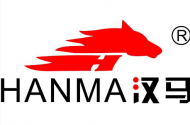In recent years, regenerated cellulose fibers (such as viscose, modal, Tencel, and other fibers) continue to appear, which not only timely meet people’s needs, but also partially alleviate the problems of lack of resources and destruction of the natural environment.
Because regenerated cellulose fiber has the dual performance advantages of natural cellulose fiber and synthetic fiber, it is widely used in textile on an unprecedented scale.
01 ordinary viscose fiber
(viscose), the full name of viscose fiber is a cellulose fiber obtained by extracting and reshaping fiber molecules from natural lignocellulose with “wood” as raw material.
The non-uniformity of the complex forming process of ordinary viscose fiber will make the cross-section of conventional viscose fiber appear waist round or irregular, with holes in it and regular grooves in the longitudinal direction. Viscose has excellent moisture absorption and dyeability, but its modulus and strength are low, especially the wet strength.
02 Modal
Modal fiber is the trade name for high wet modulus viscose fiber. The difference between modal fiber and ordinary viscose fiber is that modal fiber improves the disadvantages of low strength and low modulus of ordinary viscose fiber in the wet state, and also has high strength and modulus in the wet state, so it is often called high wet modulus viscose fiber.
Similar products of different fiber manufacturers also have different titles, such as Lenzing modal TM, polynosic, Fuqiang fiber, tiger kapok, and newal of Austrian Lanjing company.
03 lessel fiber
Lyocell fiber is a kind of man-made cellulose fiber with natural cellulose polymer as raw material. Invented by the British author company and later produced by the Swiss Lanjing company, the trade name is Tencel, and its homonym “Tiansi” is adopted in China.
Lyocell is a new type of cellulose fiber prepared by using N-methyl manny oxide (NMMO) aqueous solution as a solvent, directly dissolving cellulose pulp to obtain a spinning solution, then using wet spinning or dry-wet spinning method, taking a certain concentration of ammo-h2o solution as coagulation bath to form the fiber, and then stretching, washing, oiling and drying the spun primary fiber.
Compared with the conventional viscose fiber production method, the biggest advantage of this spinning method is that NMMO can directly dissolve cellulose pulp, the production process of spinning stock solution can be greatly simplified, and the recovery rate of NMMO can reach more than 99%, and the production process hardly pollutes the environment.
The morphological structure of Lyocell fiber is completely different from that of ordinary viscose. The cross-section structure is uniform, and round, and there is no skin core layer. The longitudinal surface is smooth and has no groove. It has excellent mechanical properties, good washing dimensional stability (shrinkage is only 2%), and high moisture absorption. It has a beautiful luster, soft feel, good drapability and good elegance.
Fiber characteristics
Viscose fiber
It has good hygroscopicity and meets the physiological requirements of human skin. The fabric is soft, smooth, breathable, not easy to generate static electricity, anti-ultraviolet, comfortable to wear, easy to dye, bright color after dyeing, good color fastness, and good spinnability. The wet modulus is low, the shrinkage is high, and it is easy to deform. After entering the water, the hand feels hard, and the elasticity and wear resistance is poor.
Modal fiber
It has a soft touch, bright and clean, bright color, and good colorfastness. The fabric feels particularly smooth, the cloth surface has a bright luster, and the drapability is better than the existing cotton, polyester, and viscose fiber. It has the strength and toughness of synthetic fiber, silk-like luster, and feel. Its fabric has wrinkle resistance and ironing resistance, good water absorption, and air permeability, but its fabric has poor straightness.
Lessel fiber
It has a variety of excellent properties of natural fiber and synthetic fiber, with natural luster, smooth feel, high strength, basically no shrinkage, good moisture permeability, and air permeability, soft, comfortable, smooth and cool, good drapability, durable and durable.
Scope of application
Viscose fiber
Staple fibers can be pure spun or blended with other textile fibers. They are suitable for making underwear, coats, and various decorative articles. The filament fabric is light and thin. In addition to being used as clothing material, it can also be used to weave quilts and decorative fabrics.
Modal fiber
Modal’s knitted fabrics are mainly used to make underwear, sportswear, casual wear, shirts, high-grade ready-made clothing fabrics, etc. Blending with other fibers can improve the poor straightness of pure modal products
Lessel fiber
Covering all fields of textile, we can produce high-quality and high-grade products in cotton, wool, silk, and hemp products, as well as knitting or weaving fields.
Related Article
Several types of regenerated fibers that are easily confused.
Read moreSeveral types of regenerated fibers that are easily confused.
Key technologies for double-sided circular knitting machine needle plate calibration
Read moreKey technologies for double-sided circular knitting machine needle plate calibration
How a Circular Knitting Machine Releases and Lowers the Fabric (Shake-down Process)
Read moreHow a Circular Knitting Machine Releases and Lowers the Fabric (Shake-down Process)
What is paper-type yarn?
Five fabric components most easily misidentified during testing
Read moreFive fabric components most easily misidentified during testing







